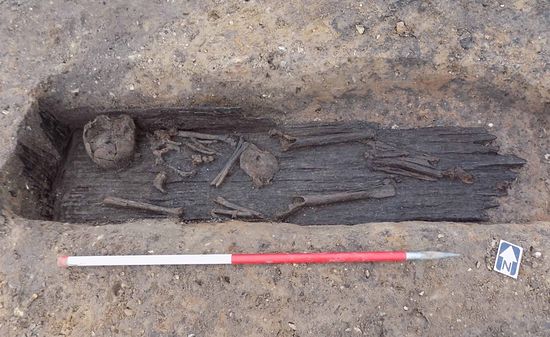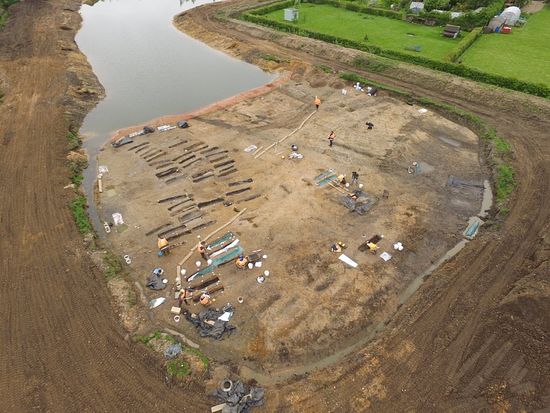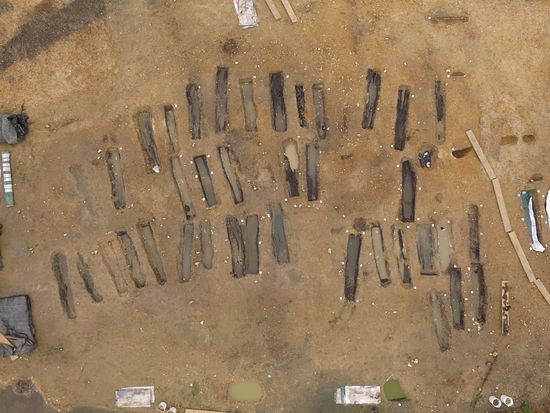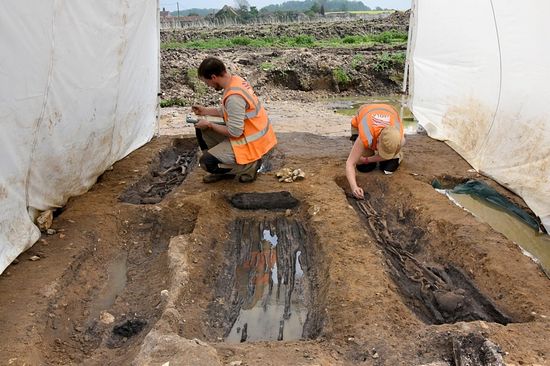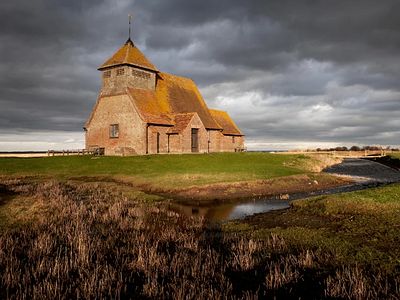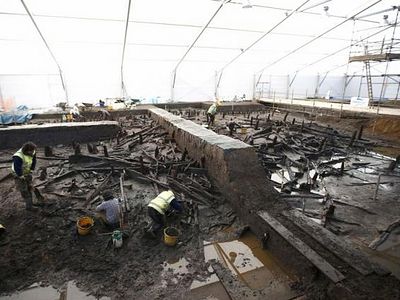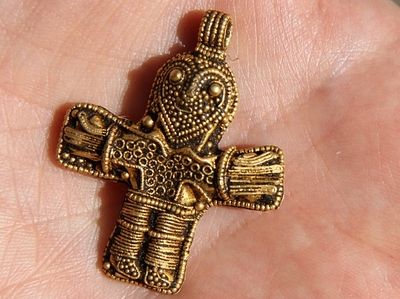Source: IBTimes
November 16, 2016
The graves of some of the first Christians in the UK have been unearthed in Norfolk. Archaeologists uncovered 81 coffins next to a timber structure they believe served as a chapel or church up to 1,300 years ago – the period Christianity was first taking roots in the British Isles.
The cemetery was uncovered as part of an excavation funded by Historic England before the development of a fishing lake and flood defence system at Wensum View in Norfolk. The team, from the Museum of London Archaeology (MOLA), said the discovery offers researchers an unprecedented look at Anglo-Saxon Christian communities. Burials from this period are lacking as the wooden coffins normally decay over time.
However, waterlogged conditions at the Norfolk site meant the graves had been well preserved. James Fairclough, archaeologist from MOLA, said: "The combination of acidic sand and alkaline water created the perfect conditions for the skeletons and wooden graves to survive, revealing remarkable details of Christian Anglo-Saxon burial practices."
Excavations revealed plank-lined graves with wooden grave markers. The graves were cut into the ground and lined with timber planks before the body was placed inside and planks placed on top to cover it. Graves like this are rare in the UK and are believed to be the earliest examples.
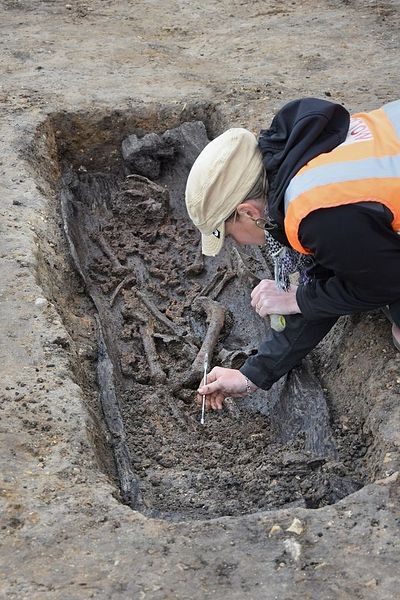 An archaeologist carefully excavates Anglo-Saxon humanremains and a dug-out tree trunk coffin (MOLA)
An archaeologist carefully excavates Anglo-Saxon humanremains and a dug-out tree trunk coffin (MOLA)
They also found 'tree trunk' coffins created from oak trees that had been split in two, lengthways, then hollowed out. Tree trunk coffins first appeared in Europe during the Bronze Age, but did not appear again until the medieval period. This is the first time they have been excavated and recorded by archaeologists in modern times.
Graves had been positioned in an east-west alignment and contained no grave goods – a hallmark of Christian burials. The relationship between the plank-lined graves and tree trunk coffins is not yet known, but researchers think it could signify an evolution in burial practices. The tree trunk coffins – as they had been found in earlier cemeteries - could signify the blending of pagan and Christian practices.
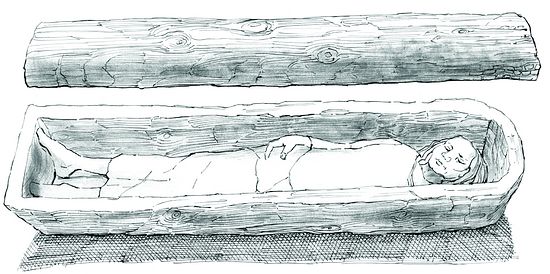 A reconstruction of tree-trunk coffin with lid from an early Anglo-Saxon graveHistoric England and Judith Dobie
A reconstruction of tree-trunk coffin with lid from an early Anglo-Saxon graveHistoric England and Judith Dobie
Duncan Wilson, Chief Executive of Historic England, said: "These rare and exceptionally well-preserved graves are a significant discovery which will advance our understanding of Middle-Saxon religious beliefs and rural communities. This cemetery has been revealed because under the current system, archaeological surveys are required before work on a sensitive site starts. This site has immense potential for revealing the story of the community who once lived there."
Middle Saxon burial with wooden coffin by MOLA on Sketchfab
Tim Pestell, Curator at Norwich Castle Museum, added: "This find is a dramatic example of how new evidence is helping to refine our knowledge of this fascinating period when Christianity and the Church were still developing on the ground. Detailed analysis of the cemetery provides the hope of better understanding the actual people living according to this new religion."
Scientists will now carry out tree-ring dating, DNA testing and dental analysis to build a better picture of the community that has been uncovered.
